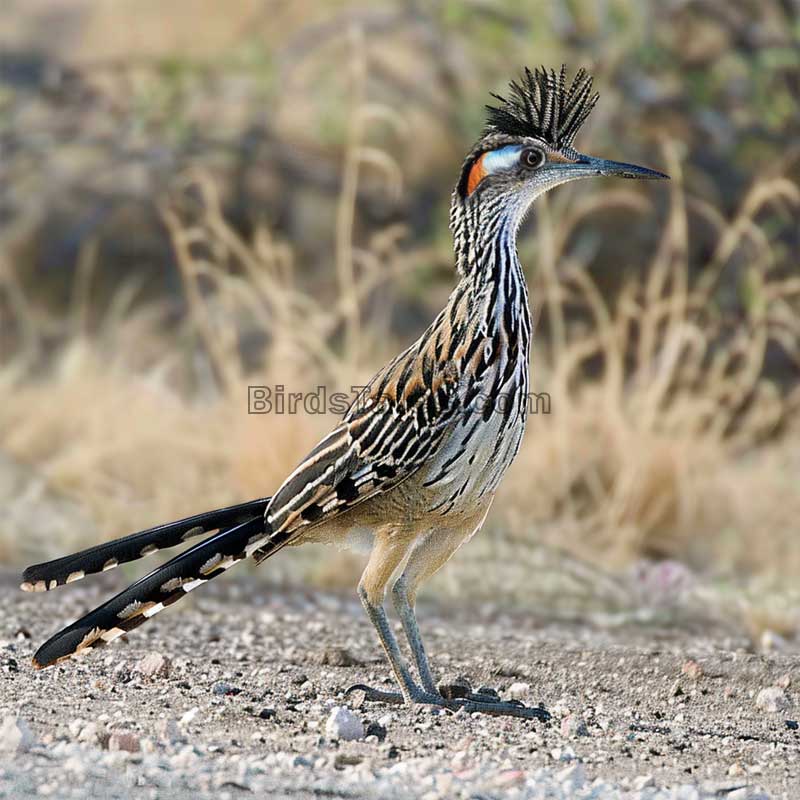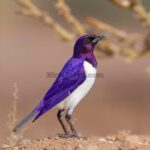Preferred Desert Habitats
The Greater Roadrunner prefers specific desert habitats that offer a blend of open ground and dense cover.
These habitats are varied but share common traits that make them suitable for the bird.
Arid Deserts and Chaparral
Arid deserts and chaparral are primary habitats for the Greater Roadrunner.
In arid deserts, you find dry, barren landscapes with sparse vegetation.
The Sonoran Desert is a prime example, providing the open spaces roadrunners need for running and hunting.
Chaparral regions have dense shrubs and low trees, which offer excellent hiding spots.
Why these habitats?
The bird’s mottled plumage blends seamlessly with the dusty, sparse foliage, providing both camouflage and protection.
Roadrunners use this to their advantage, staying hidden from predators while stalking their prey.
The combination of open ground for sprinting and dense cover for nesting and hiding is ideal.
Open ground allows them to reach top speeds while hunting, and dense cover gives them safe spots to build nests and escape threats.
The violet starling is a striking bird found in sub-Saharan Africa. Known for its bright purple feathers, it lives in…
Riparian Woodlands and Canyons
Riparian woodlands and canyons offer a different set of advantages.
These areas are characterized by the presence of water and lush vegetation.
In riparian woodlands, you find more trees and plant life, which means more prey and nesting options.
Canyons provide natural barriers and unique nesting sites.
The riparian woodlands are especially important during the dry season.
Water sources attract a variety of prey, making it easier for the roadrunner to find food.
Canyons, with their rugged terrain, offer natural protection from larger predators.
The combination of water, food, and shelter in these areas makes them perfect habitats for the roadrunner.
In these environments, they are more likely to encounter and capture small reptiles, insects, and other prey.
Adaptations for Desert Survival
The Greater Roadrunner has developed remarkable adaptations to thrive in harsh desert environments.
These adaptations are both physical and behavioral, allowing the bird to survive and flourish.
The violet starling is a striking bird found in sub-Saharan Africa. Known for its bright purple feathers, it lives in…
Hunting and Feeding Strategies
Roadrunners are opportunistic feeders, adapting their diet to what’s available.
They primarily hunt on the ground, using their speed to catch prey.
Their diet includes insects, small reptiles, rodents, and even other birds.
How do they hunt?
By using a combination of stealth and speed.
They can run at speeds up to 20 miles per hour, quickly closing in on unsuspecting prey.
Their long legs and strong beaks are essential tools.
Roadrunners have been known to use rocks to smash hard-shelled prey, showcasing their problem-solving skills.
They also have a high tolerance for venom, allowing them to hunt venomous prey like scorpions and snakes.
Shelter and Nesting Habits
For shelter, roadrunners use dense shrubs, cacti, and low trees.
These provide protection from predators and harsh weather.
They build nests using sticks, leaves, and feathers.
Nesting sites are chosen carefully.
They prefer areas with good cover to protect their young.
The nests are often found in thorny bushes or cactus plants, which deter predators.
Roadrunners also use their nests multiple times, refurbishing them each season.
This strategy saves energy and ensures they have a ready-made home each breeding season.
The violet starling is a striking bird found in sub-Saharan Africa. Known for its bright purple feathers, it lives in…
Interaction with Other Species
The Greater Roadrunner’s interactions with other species are varied and complex.
They play multiple roles in the desert ecosystem, both as predator and prey.
Symbiotic Relationships
Roadrunners form unique relationships with other desert creatures.
They are both hunters and hunted, creating a balance in the ecosystem.
Their presence helps control populations of insects and small animals, which benefits the overall health of their habitat.
They may follow larger animals, like deer, to catch insects stirred up by their movement.
This behavior benefits both the roadrunner and the larger animal, which has fewer insects to deal with.
These symbiotic relationships highlight the interconnectedness of desert life.
Conclusion
Understanding the habitat of the Greater Roadrunner is essential for its conservation.
By protecting the diverse environments it inhabits, we can ensure the survival of this remarkable bird.
The Greater Roadrunner’s ability to adapt to different desert conditions highlights the importance of preserving its natural habitat.



